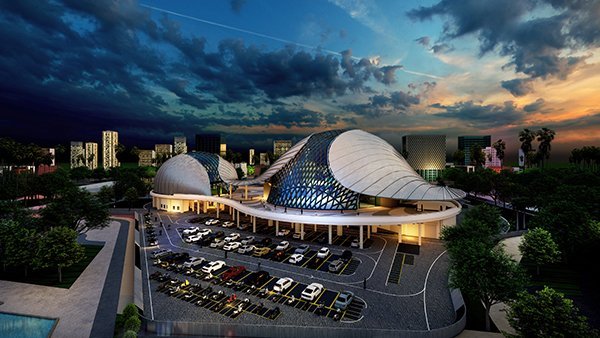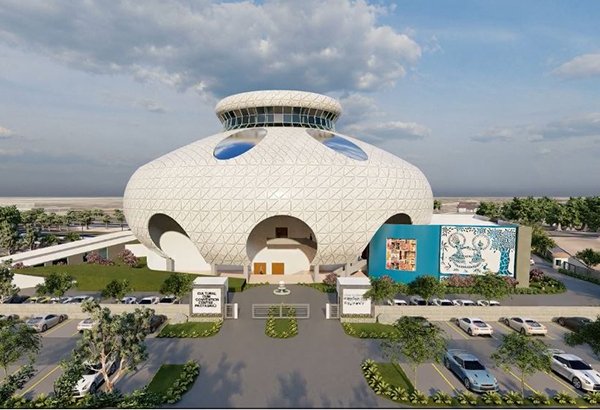He believes in embracing innovation… He is leveraging steel’s advantages to address construction challenges, embracing new technology to create aesthetically pleasing and environmentally friendly, yet cost-effective solutions…
C.S. Raghuram, Partner, Trilogue Studio LLP,
offers a sneak peek into his thoughts on the industry…
What are the major advantages of using steel vis-à-vis conventional materials?
Steel is an inherently unique and versatile building material that is available today. The advantages of steel over conventional building materials have been well documented and most of us are well aware of it. Having said that, I would like to highlight a couple of real-world practical issues and the current status of the building industry which will push steel to become the mainstay of the construction industry.
A major issue facing us is the acute shortage of skilled labor and attendant labor issues. This was quite evident during the pandemic, which resulted in delays and hindrances in numerous projects across the country. There were budget and schedule overruns, and all stakeholders, whether the clients, designers, or the contractor, were affected equally. Steel by its inherent nature of being manufactured or pre-engineered has the unique advantage of offsetting these labor problem that India faces; in addition, automation will further improve the situation. It is only a question of time before steel becomes a mainstay of the construction industry.
Added to that of course is the advantage of steel being lightweight when compared to other conventional materials with the same span and same design and project challenges. As construction becomes fast-track today where time is money, what better way to address that than turn to building material that automatically lends itself to easy and fast construction. The only challenge that I see is perhaps life safety and fire protection of steel and in that aspect as well, we are seeing a lot of recent trends and innovation.
How structural steel can be innovatively used in construction to provide design aesthetics and at the same time offer an economical solution?
The fundamental advantage of structural steel is well known. With the rapid technological advancement that is prevailing in the construction industry, architects are and will be able to explore form, space and materials in the design stage using structural steel. We architects can completely model the building through all various 3D software and export them to either CNC cutting machines or to 3D printing. No other material lends itself to this kind of computational construction method and technology-driven prefabrication as much as steel will lend itself. There is tremendous potential for steel in the coming years to become the forerunner of path-breaking architecture.
Another way that structural steel can be innovatively used is not just as a primary structural element but also as a secondary structural element in façade screens, innovative 3D cladding, etc. and with steel’s inherent flexibility it can lend itself to prefabrication when compared with related materials. This advantage will be explored at great length by architects in the coming years through 3D visualization and building information modeling.
What is your take on the variety of sections/grades provided by our steel producers for various demands of creativity?
The sections available in the market today are highly standardized. As we encounter new and unique problems or unique design challenges, we as designers need to have a lot of flexibility in terms of larger span, more economical sections and more efficient consumption of materials. There is a tendency to revert to or opt for built-up sections, especially in long spans or if one is designing forms that have certain creativity beyond the regular rectangular box. The standard sections available in the market today do not offer the right section modulus or do not address the bending moment in an efficient way. If we choose the standard section, we end up with a heavier section than what is required to solve the bending moment. Hence, the main challenge for the sections available in the market today is to offer range and flexibility.
What trend are we going to witness in the next 5-7 years, as far as designing structures with steel is concerned?
Over the next 5 or 7 years we are going to see two major trends. One is the convergence of technologies and materials into a hybrid medium. Steel is going to be designed and built in combination with other traditional materials such as concrete, brick, different façade elements, etc. and we are going to see the lines that have so far been dividing the different technologies, different materials disappear. This convergence is a very positive trend. The construction industry is now reaching a point of maturity where it is able to derive the best aspect for each of the different materials and technologies and further combine them together to give us a very futuristic and holistic solution.
Another that I foresee is the emergence of energy-efficient measures incorporated into steel buildings. We traditionally know that steel is a highly energy-consuming material, both in terms of production as well as consumption even though it has a huge potential for recycling. The question that needs to be addressed now is, how can steel buildings also become environmentally responsible so that the overall move is towards a more sustainable future.
We at Trilogue Studio are looking at designing steel buildings that are environmentally responsible through the use of computational methods for solar heat gain and daylight analysis, passive techniques, water recycling and reuse and renewable energy generation integrated with the steel design and construction.
What should be the strategy of the industry in promoting structural steel construction in India?
The strategy of the steel industry in promoting structural steel construction in India should be through an acknowledgment that collaboration between different materials and technologies is vital, not just for the health of the construction industry but also for India to emerge as a leader in design and construction in the next 15 to 20 years. Today with so many labor problems and the threat of a future pandemic. It is pertinent that the inherent advantages of steel construction reach out to buildings that are not just in the industrial sector or in manufacturing but extend to commercial, housing, as well as other sectors as well.
We are already seeing commercial buildings and car park structures being built with steel. Now the time has come to cast the net wider and explore the potential of collaborating with other technologies and industries in the construction sector to see how the benefits of steel pass on to other building types as well. This will help the influence of steel as a building material spread much wider than it is currently seen.







